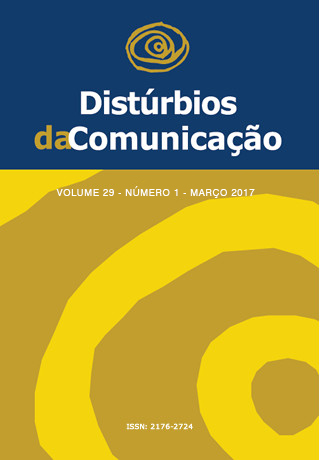Impact of the teacher’s voice in the classroom: a literature review
DOI:
https://doi.org/10.23925/2176-2724.2017v29i1p2-9Keywords:
Dysphonia, Voice Quality, Comprehension, Speech Perception,Abstract
Objective: To realize a review of the literature about the impact of teacher’s dysphonia on student learning. Methods: It was conducted a survey over the last 15 years in national and international literature, published in English, Portuguese or Spanish, using the MEDLINE, IBECS, LILACS and Web of Science. The following keywords and descriptors were used: voice disorders, dysphonia, dysphonic voice, voice quality, language tests, comprehension, speech perception and cognition. Results: Eight articles have included the proposed criteria in the last 15 years. It was found seven cross-sectional studies and a literature review, which were categorized by the authors as follow: dysphonia and language comprehension, dysphonia and language comprehension in noisy environments; perception of dysphonic voice, vocal quality and speech rate. Conclusions: Studies show that teacher’s dysphonia interferes in the understanding of the message in the classroom, especially in noisy environments. The students evaluate the dysphonic voice negatively. The speech rate also presented as an important factor for language processing.Downloads
Download data is not yet available.
Metrics
Metrics Loading ...
Downloads
Published
2017-03-27
Issue
Section
Artigos
License
Copyright (c) 2017 Ana Luiza Vilar Rodrigues, Adriane Mesquita de Medeiros, Leticia Caldas Teixeira

This work is licensed under a Creative Commons Attribution 4.0 International License.









